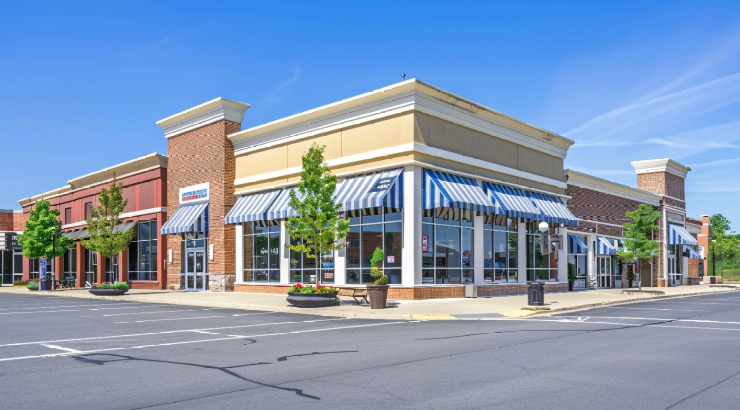As urban centers around the globe face growing congestion, rising costs, and shifting work patterns, suburban commercial hubs have emerged as a defining trend in modern development. These mixed-use developments, blending residential, retail, and office spaces, are transforming suburban landscapes while reshaping the relationship between urban and suburban areas. David Shulick of Philadelphia delves into the factors driving the rise of suburban commercial hubs, their impact on traditional urban centers, and the implications for communities, businesses, and policymakers.
The Factors Driving Suburban Growth
1. Changing Demographics and Lifestyles
One of the most significant drivers of suburban commercial hubs is the demographic shift in population preferences. Millennials, now entering their peak earning and family-raising years, are increasingly moving to suburban areas in search of affordable housing, quality schools, and outdoor spaces. Simultaneously, baby boomers are downsizing from urban homes but still seeking vibrant, walkable communities. These lifestyle shifts create demand for suburban developments that offer urban conveniences without the challenges of city living.
2. Remote Work Revolution
The COVID-19 pandemic accelerated the adoption of remote and hybrid work models, reducing the need for daily commutes into urban centers. This change has led many professionals to prioritize living in suburban areas with access to nearby amenities, reducing reliance on city-based workplaces. Developers are capitalizing on this trend by creating commercial hubs that offer office spaces closer to suburban residents.
3. Economic Diversification in Suburbs
Historically, suburbs were predominantly residential, with commercial activity concentrated in cities. However, the growing demand for local amenities has spurred economic diversification in suburban areas. Today’s suburban commercial hubs are home to everything from corporate offices and coworking spaces to entertainment venues and artisanal food markets.
4. Improved Infrastructure
Investments in transportation and digital infrastructure have made suburban hubs more accessible and viable. Enhanced public transit options, highways, and broadband connectivity ensure that suburban hubs are well-integrated into broader regional networks, making them attractive to businesses and residents alike.
Features of Suburban Mixed-Use Developments
Suburban commercial hubs often emphasize walkability, community-centric design, and a balanced mix of residential, retail, and office spaces. Key features include:
- Integrated Residential Areas: High-density apartments, townhomes, and single-family homes within walking distance of commercial areas.
- Retail and Dining: Boutiques, grocery stores, and restaurants that cater to diverse tastes and preferences.
- Office Spaces: Flexible office environments and coworking spaces tailored to the needs of remote workers and small businesses.
- Public Spaces: Parks, plazas, and recreational areas designed to foster community interaction.
- Sustainability: Energy-efficient buildings, green spaces, and eco-friendly infrastructure to meet the growing demand for environmentally conscious development.
Impact on Urban Centers
The rise of suburban commercial hubs poses both challenges and opportunities for traditional urban centers:
1. Economic Redistribution
Suburban hubs are drawing businesses and consumers away from urban areas, potentially reducing foot traffic and revenue for city-based establishments. However, this redistribution can also alleviate overcrowding in urban centers, allowing cities to focus on enhancing quality of life and addressing infrastructure challenges.
2. Shifting Urban Roles
As suburban hubs grow, cities are increasingly reimagining their roles. Urban centers may pivot toward becoming cultural and innovation hubs, emphasizing art, education, and specialized industries while suburban areas handle more routine commercial and residential needs.
3. Competition and Collaboration
The competition between urban and suburban areas could drive innovation in both. Cities and suburbs may also collaborate on regional planning initiatives to ensure balanced growth, efficient transportation networks, and equitable resource allocation.
Benefits of Suburban Commercial Hubs
Suburban commercial hubs offer a range of benefits for various stakeholders:
For Residents:
- Reduced Commute Times: With offices, shops, and amenities nearby, residents spend less time commuting and more time enjoying their surroundings.
- Improved Quality of Life: Access to green spaces, local services, and vibrant community areas enhances overall well-being.
For Businesses:
- Access to Talent: Suburban hubs attract professionals seeking a better work-life balance, providing businesses with a highly motivated workforce.
- Lower Operating Costs: Suburban locations often offer lower rents and operational expenses compared to urban centers.
For Developers and Municipalities:
- Economic Growth: Mixed-use developments generate jobs, stimulate local economies, and increase property values.
- Sustainable Urbanization: Well-planned suburban hubs reduce sprawl and promote efficient land use.
Challenges and Considerations
Despite their advantages, suburban commercial hubs face challenges that must be addressed for long-term success:
1. Transportation Connectivity
While suburban hubs reduce the need for long commutes, they must be well-integrated into regional transportation networks to ensure accessibility. Investments in public transit, bike lanes, and pedestrian infrastructure are critical.
2. Community Resistance
Suburban developments often encounter resistance from local residents concerned about increased traffic, environmental impacts, or changes to neighborhood character. Engaging communities early in the planning process and addressing concerns transparently can mitigate opposition.
3. Balancing Growth and Sustainability
Rapid development can strain local resources and infrastructure. Planners must prioritize sustainable practices, such as renewable energy and water conservation, to ensure long-term viability.
The Future of Suburban Commercial Hubs
The rise of suburban commercial hubs is more than a trend; it reflects a fundamental shift in how people live, work, and shop. As these developments continue to evolve, they have the potential to redefine the balance between urban and suburban living. By focusing on thoughtful design, sustainable practices, and community engagement, suburban hubs can offer a blueprint for modern, resilient communities that meet the needs of a changing world.
As urban centers adapt to this new landscape, the interplay between city and suburb will shape the future of regional development. For stakeholders across the spectrum, the challenge lies in harnessing this shift to create spaces that are not only functional but also enriching for the people who inhabit them.
